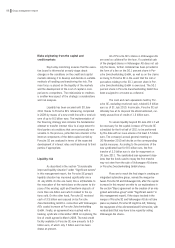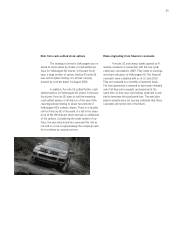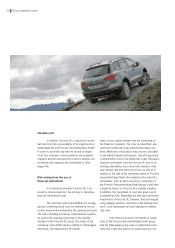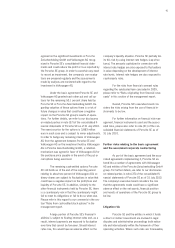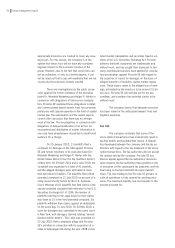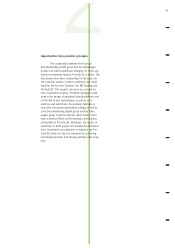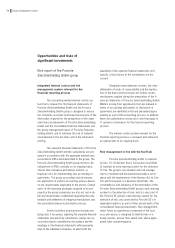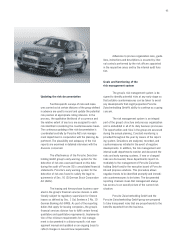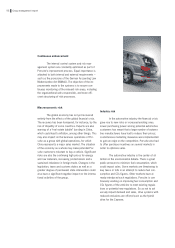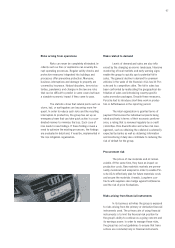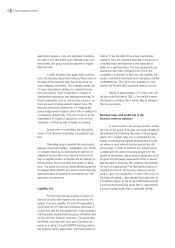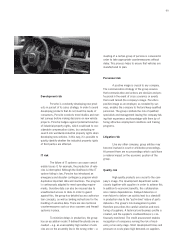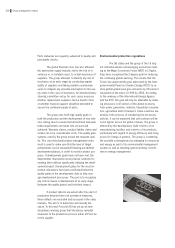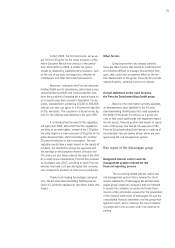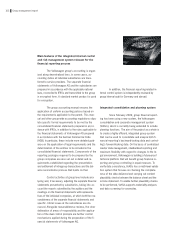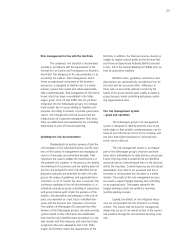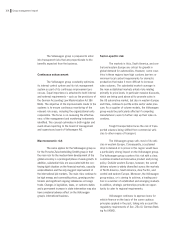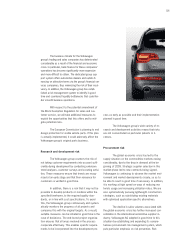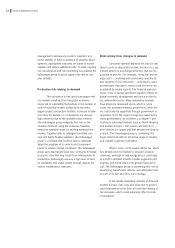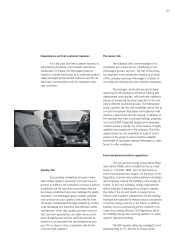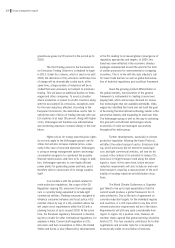Porsche 2009 Annual Report Download - page 98
Download and view the complete annual report
Please find page 98 of the 2009 Porsche annual report below. You can navigate through the pages in the report by either clicking on the pages listed below, or by using the keyword search tool below to find specific information within the annual report.
approved in advance, only with approved counterpar-
ties and on the admissible scale. Without using such
instruments, the group would be exposed to higher
financial risks.
In order to protect the group from currency
risks, the treasury department reduces these risks on
the basis of the planned sales figures by using cur-
rency hedging instruments. The company makes use
of major international partners for forward transac-
tions and options. Such cooperation is subject to
standardized regulations and ongoing monitoring. In-
terest instruments such as interest rate swaps or op-
tions are used to hedge against interest risks. The
financial instruments entered into for hedging pur-
poses hedge lead to balance sheet risks in addition to
counterparty default risks. The risk of effects on the
presentation of results of operations in the income
statement is limited by way of hedge accounting.
Default risks in receivables are reduced by
means of an intensive receivables management sys-
tem.
Channeling excess liquidity into investments
exposes the group to further counterparty risks. Partial
or complete failure by a counterparty to perform its
obligation to pay interest and repay principal would
have a negative impact on liquidity and accordingly on
the net assets, financial position and results of opera-
tions. The group has set out clearly defined guidelines
to manage these default risks and to ensure that only
approved financial instruments are entered into with
approved counterparties.
Liquidity risk
Porsche also pursues a policy of maximum
financial security with regard to the assurance of li-
quidity. To ensure liquidity, Porsche AG negotiated a
syndicated line of credit with a banking syndicate. In
conjunction with the loan agreement, it was arranged
with the banks involved that the group will deliver and
comply with two financial covenants. The group satis-
fied these covenants this fiscal year that relate pri-
marily to a rolling 12-month EBITDA (earnings before
tax, financial result, depreciation and amortization) in
relation to the net debt of the group’s automotive
segment. They are reviewed internally in the group on
a monthly basis and reported to the syndicate of
banks on a quarterly basis. The loan agreements are
deemed to have been infringed if any one of the
covenants is breached. In that case, the banking syn-
dicate is entitled to terminate and immediately call the
syndicated loan. The risk of non-compliance is dee-
med by the Porsche AG’s executive board to be low.
Bonds of approximately 1.15 billion euro will
fall due in the first half of 2011. Porsche AG’s execu-
tive board is confident that it will be able to refinance
them as necessary.
Residual value and credit risk in the
financial services business
In some markets, the leasing business entails
the risk for the group of vehicles not being saleable at
the planned price following the expiry of lease agree-
ments. This residual value risk is combated by con-
tinually monitoring the planned development of resid-
ual values in local markets and by appropriate risk
provisioning. In order to minimize the default risk as-
sociated with the vehicle financing program for the
benefit of the dealers, those dealers taking part in the
program are thoroughly assessed in order to ensure
that the level of financing, the collateral required and
the term are appropriate. The receivables balance is
regularly monitored, and security measures are ap-
plied in cases of irregularities. In spite of the crisis on
the financial markets, loan defaults have only risen to
a moderate degree as the group traditionally pursues
a well-founded purchasing policy that is supported by
a sound scoring model that is constantly refined.
98 Group management report


